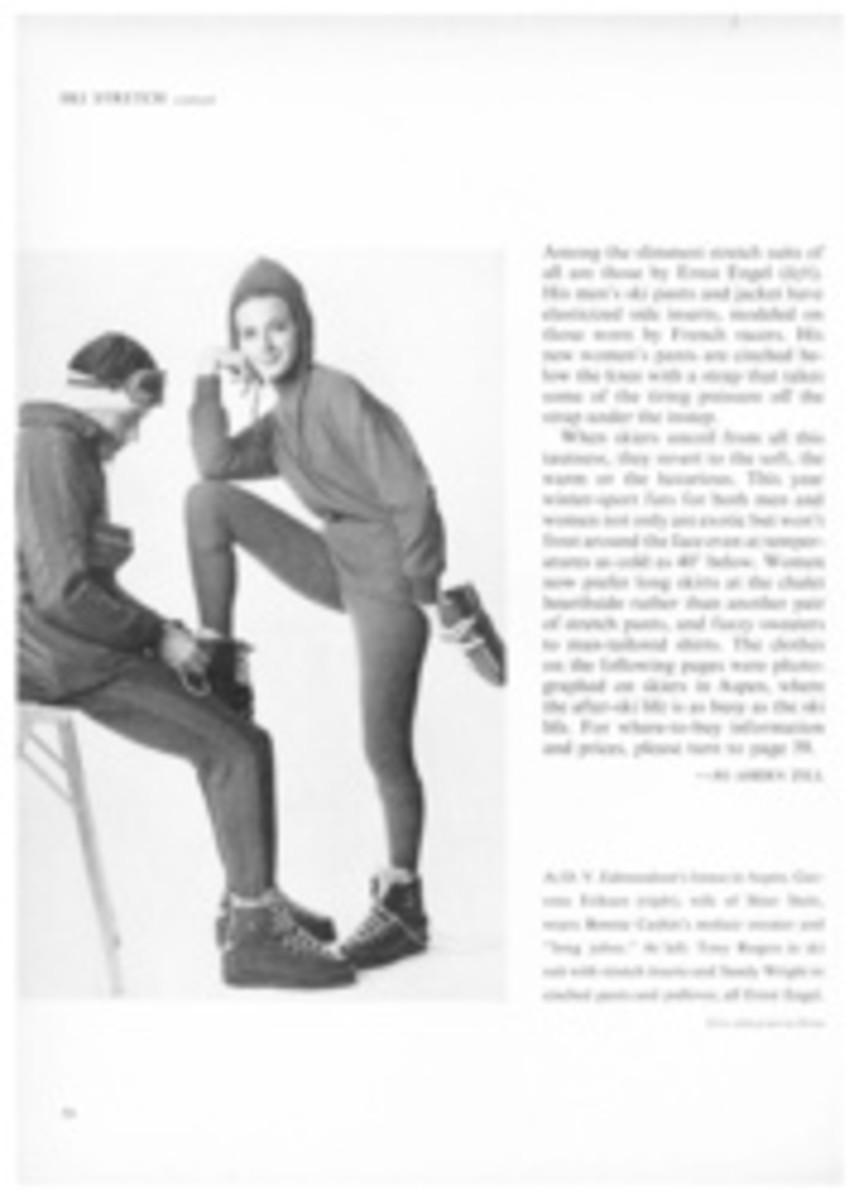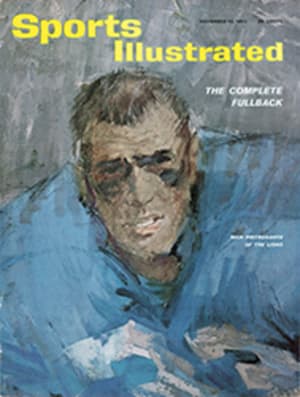
New courses for jump horses
Spectacular jumping and good houses marked New York's 79th National Horse Show, the best in every respect in at least 15 years. Some society columnists deplored the slight decline of glitter in the box seats, the concessionaires complained about their eviction from the lobby and the grooms threatened to strike because their traditional seats were usurped by a sponsor's display, but the record number of paying customers saw some superb performances in the ring. There were saddle horses, Shetland ponies and hunters galore, some dashing rides by Italy's Piero d'Inzeo, the show's leading rider, and some magnificent high jumping. An open-class horse named Jacks or Better cleared 6 feet 10 inches, and Canada's Tommy Gayford on Blue Beau leapt a towering 7-foot 1-inch wall for a new Garden record.
In fact, the only major flaw in James A. Thomas Jr.'s revitalized National was the length of the performances, which generally ran well past midnight. But even here New Yorkers fared better than patrons at the Washington show, where the earliest finish was 12:45 a.m. A pillow salesman in Washington could have made a fortune vending his wares for sitting and napping while the jump crew crept about its chores.
Once the courses were in place there was nothing to yawn about at either show, as both the national and international jumpers turned in brilliant rounds. The vastly improved performances in New York were attributable not just to the quality of the horses or the new black and white ring decor, but to the new course designs of Arthur McCashin, a former U.S. Olympic rider. McCashin's knowledge in this field is undisputed, even among show people, who would differ about the time of day on a lobby clock. For years McCashin has listened to the complaints of foreign and U.S. riders about the Garden, and for years he has watched jumpers of reputation set records elsewhere and then fail to clear a 5-foot Garden fence. In the past he designed the courses in Washington, where, until this year, the jumping was vastly superior to that in New York. Called in at last by the National, McCashin set out to prove that it wasn't the Garden's cramped facilities that made the jumping so lackluster, but the look and position of the fences. Since Tommy Gayford won the Puissance last year with Blue Beau at an uninspired 5 feet 6 and jumped 7 feet 1 this time, McCashin has obviously made his point.
Fast and clean
The U.S. riders won the team events and championship by a wide margin, but the individual events were highly competitive. Italy's lone representative, Major D'Inzeo, who hardly lived up to his notices at Washington, came to life in New York when the show was in its third day. He won the Thursday matinee event with a fast and daring ride on his Irish-bred chestnut, Sunbeam, and the $2,500 International Jumping Stake on Saturday, demonstrating that his reputation as the world's greatest rider is well deserved. He won the class on time—by a second—from England's European champion, David Barker, on Mister Softee, the handsome chestnut horse that won the stake at Washington. The same combination of D'Inzeo and Sunbeam was victorious on Sunday night and again gave a flawless performance in the closing night's event, the Grand Prix de New York. But Mister Softee was also clean and the two champions went into a jump-off. This time the flashy Mister Softee turned the tables, defeating Sunbeam on the second jump-off on time—by one second. D'Inzeo's three wins and one second place gave him enough points for the individual championship as well as the award for the leading foreign rider.
The open jumping also ended in a jump-off, as Ben O'Meara's Jacks or Better, this year's PHA champion, and Mr. and Mrs. C. S. Florman's Unusual, with Kathy Kusner aboard, tied for the title. Unusual and Kathy, riding with the U.S. team in Washington, had won the President's Cup, an amazing feat for a horse in his green year. They also won the open jump-off in New York with a perfect round.
Behind the scenes at the National there was a flurry of controversy when the American Horse Shows Association vets arrived to take saliva and urine tests. This is a new development on the horse show scene; to date about 10 shows have been visited. There had been some complaints about the use of tranquilizers and stimulants, and the testing rule was passed to check and, if necessary, correct the situation. Unfortunately, this association does not have enough money available for uniform checking, so spot tests have been tried in an effort to scare the potentially guilty.
Although most exhibitors piously agree they are against any form of doping, they are also very unhappy about the rule. Many horses are tranquilized before shipping, and traces of the drug may remain for 48 hours or even longer. In addition, some conditioning tonics contain small amounts of strychnine, and many children give their horses Cokes after a class, which might result in a finding of caffeine. However, all 44 tests conducted in New York were negative. The tests were a bother, but perhaps a justified one. The real nuisance was the antivivisectionists who, after a newspaper advertising campaign against tail-setting notable for its lack of taste and accuracy, served the National's president with a court summons. Since the law against this practice has twice been declared unconstitutional (the latest decision was in August of this year), the campaigners obviously were indulging in harassment—and displaying the petty vindictiveness of the defeated.

